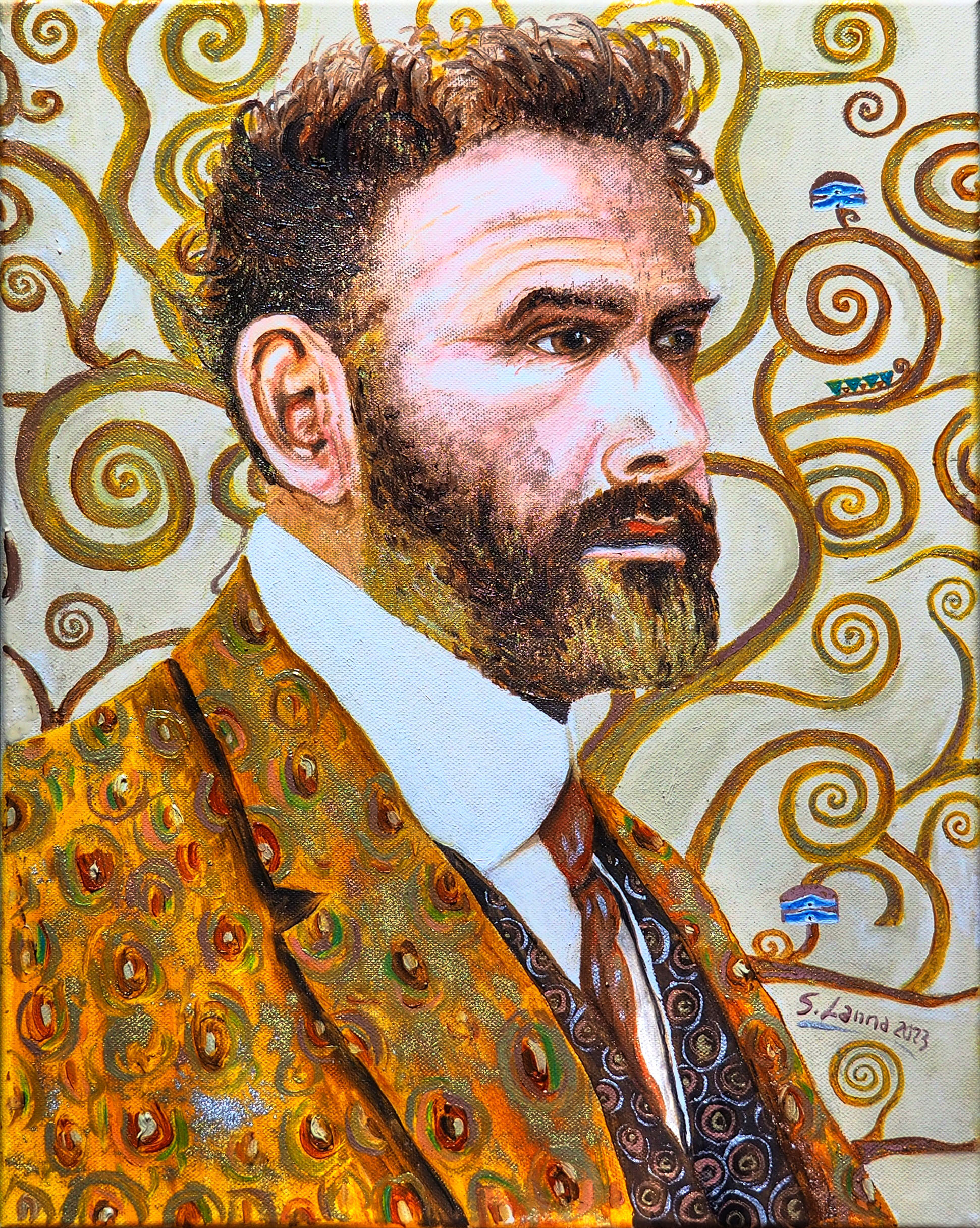Klimt portrait

Ho voluto fare un omaggio al grande pittore del secessionismo viennese ritraendolo nel suo stile fuori dai canoni accademici dell'epoca.
I wanted to pay homage to the great painter of Viennese secessionism by portraying him with his style outside the academic canons of the time.
Gustav Klimt nacque il 14 luglio 1862 a Baumgarten, allora sobborgo di Vienna, secondo di sette fratelli (quattro femmine e tre maschi).
In contrasto con i rigidi canoni accademici, nel 1897 Klimt fondò insieme ad altri diciannove artisti la Secessione viennese
Nel 1903 Klimt si recò due volte a Ravenna, dove conobbe lo sfarzo dei mosaici bizantini. L'oro musivo, assieme ai ricordi dei lavori orafi del padre e del fratello, gli suggerì un nuovo modo di raffigurare la realtà modulando le parti piatte e plastiche con passaggi tonali, dall'opaco al brillante. È il dominio dell'oro che contraddistingue le tele del cosiddetto «periodo aureo» o <«dorato» di Klimt.
Gustav Klimt was born on July 14, 1862 in Baumgarten, then a suburb of Vienna, second of seven siblings (four girls and three boys).
In contrast to the rigid academic canons, in 1897 Klimt founded the Wiener Secession together with nineteen other artists
In 1903 Klimt went to Ravenna twice, where he met the magnificence of Byzantine mosaics. The mosaic gold, together with the memories of his father's and brother's work in goldsmiths, suggested to him a new way of representing reality by modulating the flat and plastic parts with tonal transitions, from opaque to brilliant. It is the dominion of gold that distinguishes the canvases of Klimt's so-called "golden age".
Tecnica: Pennelli in olio e polveri metalliche su tela (Oil and metal powders on canvas)
Dimensioni: 40x50 cm
Supporto: Tela di cotone montata su telaio in legno (Cotton canvas on wood frame)
Realizzazione: 2023
Codice: 2023.07-SL08
Disponibilità: SI (YES)
Prezzo: On shopping page